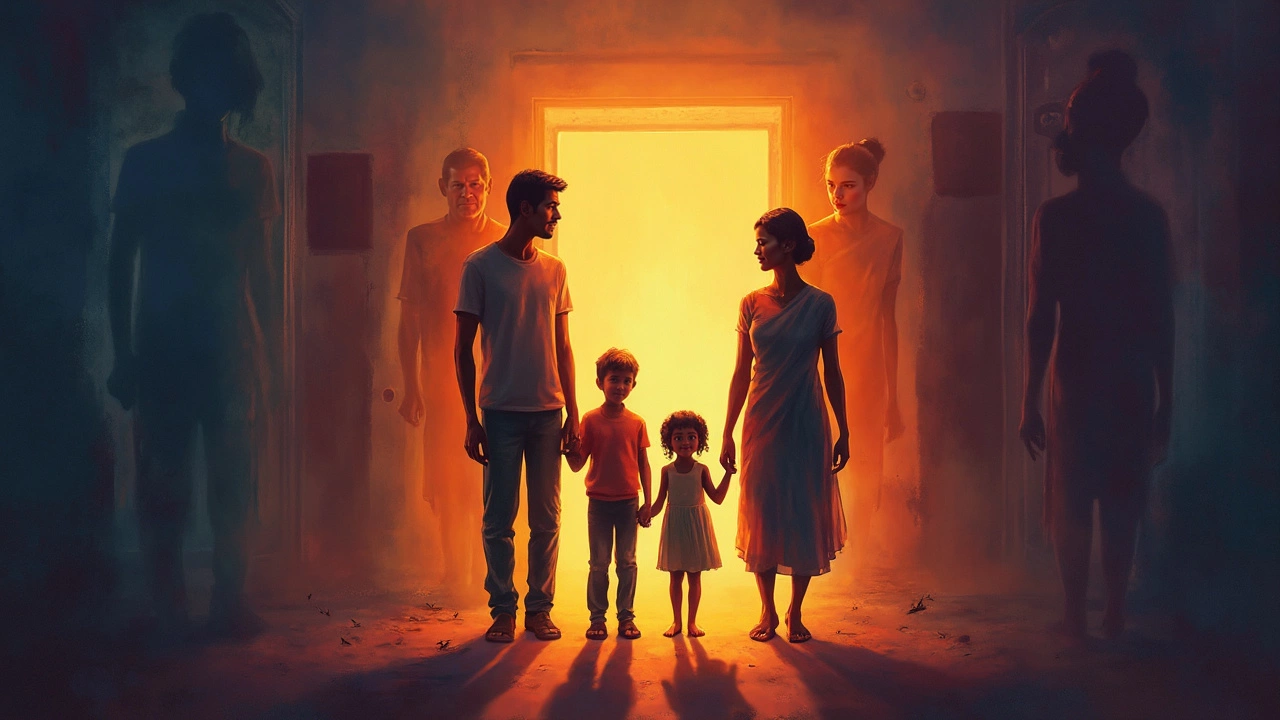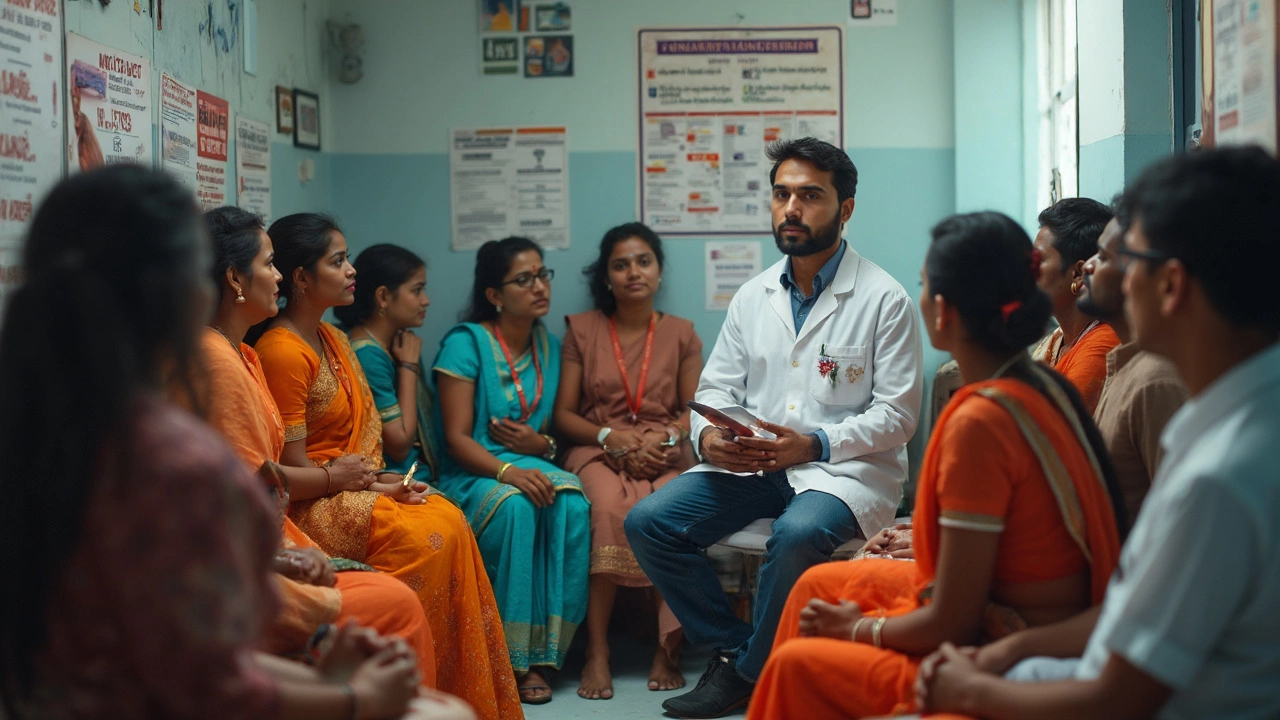If you had to name the three deadliest cancers, would you get them all right? It’s not always about how common a cancer is—it’s about what makes some of them so hard to survive. A deadly cancer kills quickly, is sneaky about showing symptoms, and often spreads before anyone realizes what’s wrong. That’s why understanding these top killers can make a massive difference.
Lung, pancreatic, and colorectal cancers don’t play fair. They lead the charts when it comes to cancer deaths across the globe. People often think about cancer in terms of who gets it, but the real question is this: which ones are trickiest to treat—and why? Knowing the answer helps you spot the warning signs early and could end up saving a life, maybe even your own.
Ready to get real about what puts these cancers at the top of the danger list? Let’s pull back the curtain on how they work, why they hit so hard, and what you can do to up your odds of avoiding them (or at least catching them before they turn nasty).
- Why Some Cancers Are Deadlier than Others
- Lung Cancer: The Relentless Killer
- Pancreatic Cancer: Quiet Yet Aggressive
- Colorectal Cancer: The Silent Threat
- Survival Rates and What Influences Them
- Tips to Lower Your Risk and Catch Cancer Early
Why Some Cancers Are Deadlier than Others
Not every cancer is a death sentence, but some are a lot deadlier than others. The worst ones have a mix of bad timing, tricky behavior, and stubborn resistance to treatment. So what exactly makes the top killers stand out?
First, the deadliest cancers tend to hide. They don’t usually cause symptoms until they’re already deep inside your body or have spread to other places. For example, pancreatic cancer barely makes a peep until it’s in a late stage. By then, treating it gets way harder.
Another reason these cancers wreak havoc is because they grow and spread faster than the rest. A slow-growing cancer gives doctors more time to spot it and take it out. Fast-spreading ones—like some types of lung and pancreatic cancers—don’t wait around. They rush into nearby organs and even distant spots in the body before you know it.
Treatment resistance is another biggie. Some cancers just don’t respond well to the standard mix of chemo, radiation, or surgery. Sometimes, even the toughest treatments barely slow them down. That’s especially true for advanced pancreatic or small-cell lung cancers.
Let’s not forget about where cancer grows. Tumors in places like the brain, pancreas, or lungs can mess with vital functions or make surgery nearly impossible. That’s a huge part of why these types show up on every list of deadliest cancers.
Here’s a quick summary of what you’re up against with the most ruthless cancers:
- They’re hard to spot early (few or no symptoms).
- They spread fast to other organs.
- They resist common treatments.
- They’re located in parts of the body where removing tumors is tough.
If you catch a cancer early, survival rates shoot up. Cancer that’s already spread is another story. That’s why paying attention to symptoms, routine screenings (when available), and family history is so important.
Lung Cancer: The Relentless Killer
Lung cancer is the top cause of cancer deaths, and there’s no sugarcoating it—this one is brutal. Most folks think of smoking right away, and sure enough, about 85% of lung cancer cases are linked to lighting up. But even if you’ve never touched a cigarette, you’re not totally safe. Air pollution, secondhand smoke, and even genetics play a role.
What really makes lung cancer so dangerous? It’s sneaky. Early on, there are barely any symptoms, maybe just a mild cough or a bit of tiredness. By the time things get serious—like coughing up blood, constant chest pain, or unexplained weight loss—the cancer has usually spread to other parts of the body. That’s why catching it early is so tough.
Here’s what the numbers look like:
| Fact | Data (2025) |
|---|---|
| New cases (worldwide) | 2.3 million/year |
| Deaths (worldwide) | Approx. 1.8 million/year |
| 5-year survival (all stages) | Less than 20% |
| Percentage due to smoking | ~85% |
The main types of lung cancer are non-small cell (about 85% of cases) and small cell. Non-small cell grows slower, but both kinds are trouble. Treatment can mean surgery, chemo, radiation, or targeted drugs, depending on how far the cancer’s gone. But here’s the harsh reality: survival rates aren’t great, especially if it’s caught late.
If you’re looking for ways to avoid being part of these stats, there’s good news. Most importantly: don’t smoke—or if you do, quit now. And yeah, avoiding secondhand smoke matters a lot more than most people realize. If you’ve got a long-term cough that won’t quit or notice any change in your breathing, get checked out. Getting a low-dose CT scan is now recommended for people over 50 who have a history of heavy smoking, and it actually saves lives.
- Quit smoking—anytime is better than never.
- Avoid exposure to radon, a gas that can build up in homes (especially in basements).
- Stay away from secondhand smoke whenever possible.
- If you’ve been a heavy smoker, talk to your doctor about screening.
This is one of those cancers where prevention and early action really do make a difference. Lung cancer doesn’t always give second chances.
Pancreatic Cancer: Quiet Yet Aggressive
This one’s a real monster. Pancreatic cancer is known for being tough to spot and even harder to beat. It doesn’t give off many warning signs in the early days. By the time folks feel something’s wrong—maybe some belly pain, unexplained weight loss, or yellowing of the skin—this cancer has usually spread. That’s why it sits high on the list of deadliest cancers. Most pancreatic tumors are found when they’re already advanced.
Here’s the kicker: The five-year survival rate for pancreatic cancer is shockingly low. Check out these numbers:
| Stage at Diagnosis | 5-Year Survival Rate |
|---|---|
| Local | 44% |
| Regional | 15% |
| Distant/Metastatic | 3% |
What’s the big issue? It all comes down to location and stealth. The pancreas sits deep inside your belly, hiding behind other organs. Tumors can quietly grow without bumping into anything important until they get big. And unlike some cancers, there’s no simple, routine screening test for it yet.
But what puts some people at higher risk? Here are some common risk factors you should know about:
- Smoking (biggest controllable risk)
- Chronic pancreatitis (ongoing pancreas inflammation)
- Family history of pancreatic cancer
- Diabetes, especially new-onset in people over 50
- Being overweight or obese
If you ever notice odd symptoms like persistent upper belly pain, skin or eyes looking yellow (that’s jaundice), or unexplained weight loss, see a doctor—especially if you’ve got the risk factors above. Early action won’t guarantee a cure, but it sure improves your odds. Right now, surgery offers the best shot if the tumor hasn’t spread, but only a minority get diagnosed early enough for that to be an option. Chemo, radiation, and some promising new treatments are also in use, but the fight is tough.
The bottom line: Don’t ignore weird symptoms, and if pancreatic cancer runs in your family, ask your doctor about check-ups or genetic testing. Staying aware is your best defense with this sneaky, aggressive cancer.

Colorectal Cancer: The Silent Threat
Colorectal cancer lingers in the background and doesn't shout for attention. That’s what makes it so dangerous—it’s easy to miss until it’s already advanced. This cancer starts in the colon or rectum and often grows quietly for years. By the time you notice anything wrong, it might have already spread.
Here's something most people don't know: Colorectal cancer is the third most common cancer diagnosis worldwide and also ranks among the top three causes of cancer deaths. It affects both men and women, usually hitting people over 50, but younger cases are rising faster than ever. Risk goes up if you have a family history, eat a lot of processed or red meat, or have certain gut issues like Crohn’s disease.
Early-warning signs can be so subtle you might brush them off as something minor:
- Blood in your stool or changes in your bathroom habits that last more than a few days
- Unexplained weight loss
- Ongoing cramps or stomach pain
- Feeling tired even after a good night’s rest
People delay seeing a doctor because the symptoms are embarrassing or seem unimportant. That’s a big mistake. Getting checked out right away matters. Colonoscopies are still the gold standard for finding trouble spots early, when treatment is much more likely to work. Doctors usually recommend regular screening starting at age 45 for most people, and earlier if you have family risk.
| Fact | Number |
|---|---|
| Rank among cancer deaths | 3rd |
| Estimated new cases worldwide (2024) | ~1.9 million |
| Estimated deaths worldwide (2024) | ~935,000 |
| 5-year survival (caught early) | ~90% |
| 5-year survival (late stage) | <15% |
The numbers make it clear—catching colorectal cancer early makes a huge difference. If you stick to screening schedules and keep an eye out for weird changes, your odds go way up. A few simple habits can lower your risk too:
- Eat more fiber and fewer processed meats
- Stay a healthy weight and move your body regularly
- Limit alcohol and quit smoking
Don’t let awkwardness keep you from asking your doctor about that next checkup. When it comes to colorectal cancer, what you ignore can absolutely hurt you.
Survival Rates and What Influences Them
When you hear the word cancer, survival rates instantly pop into mind. But here’s the thing—those rates aren’t just numbers on a chart. They depend on a bunch of real-world factors, and knowing them can honestly give you a head start if you’re ever affected by these diseases.
First, have a look at these deadliest cancers and their recent five-year survival rates in the US:
| Cancer Type | 5-Year Survival Rate |
|---|---|
| Lung | About 23% |
| Pancreatic | About 12% |
| Colorectal | About 65% |
These numbers are averages. If you catch cancer early, your odds shoot up. But when it slips under the radar until it spreads, survival drops fast. For example, early-stage lung cancer has more than double the survival rate compared to cancer found only after it’s spread.
So what actually affects these numbers?
- Stage when found: Earlier is better. Pancreatic cancer is especially tricky, as most people get a diagnosis only after it’s spread. That’s a big reason its rate is so low.
- Type and genetics: Not all lung or colon cancers are the same. Some grow slow, others are turbocharged. Plus, family history can play a role.
- Age and general health: Younger, healthier folks handle treatments better.
- Treatment advances: In the last 10 years, newer therapies (like targeted drugs and immunotherapy) have started to nudge survival rates up, especially for lung and colorectal cancers.
- Lifestyle factors: Smoking, drinking, obesity, and even air quality can affect risk and recovery.
Don’t get fooled by the word “rate” alone. Real people beat the odds every day, especially if they push for early screening and take action at the first hint of trouble.
Tips to Lower Your Risk and Catch Cancer Early
You might feel powerless against something as serious as cancer, but there’s a lot you can actually do. It’s not just luck—your choices and habits play a real part. Let’s talk about what you can focus on today to protect yourself from the deadliest cancers.
- Stop Smoking (or Don’t Start): Smoking is the biggest driver behind lung cancer and also puts you at risk for pancreatic and colorectal cancers. If you quit now, your risk starts dropping almost immediately.
- Watch Your Diet: Eating a lot of red or processed meat has been linked to colorectal cancer. Try to get more fruits, veggies, and fiber on your plate. Keeping a healthy weight helps, too.
- Get Moving: Regular exercise lowers your risk for colon and probably other cancers. Even a brisk walk a few days a week makes a difference.
- Limit the Booze: Alcohol isn’t just rough on your liver. It increases the risk of several types of cancer, including the big three here. Less is better.
- Screenings Matter: This is huge. Lung cancer screenings (for smokers or ex-smokers), colonoscopies (for those over 45, or earlier if you have a family history), and even newer blood tests can catch problems before they spread. Don’t skip these—even if you feel perfectly fine.
- Know Your Family History: If you have close relatives who’ve had these cancers, talk to your doctor. You might need earlier or more frequent screening.
- Take Unusual Symptoms Seriously: Cough that won’t quit, blood in your stool, weird stomach pain, unexplained weight loss—get them checked out rather than hoping they go away on their own.
No one expects cancer, but staying on top of screening and a few lifestyle tweaks can go a long way. Talk to people you trust, including your doctor, and keep yourself in the loop about new ways to stay protected. Your body will thank you for it.





